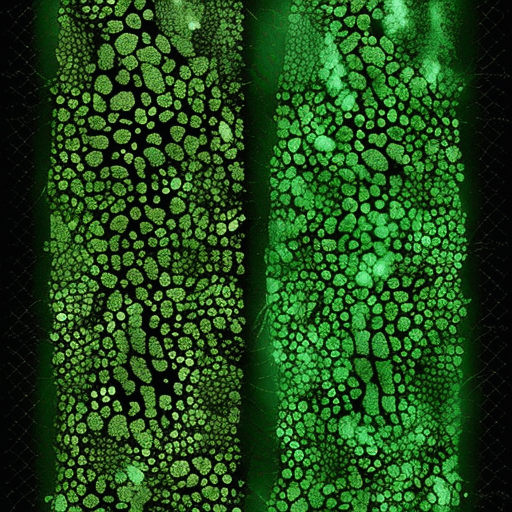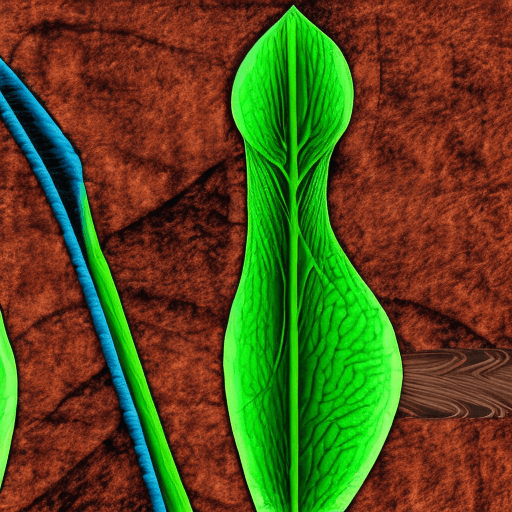Xylem and phloem are two types of vascular tissue in plants.
Xylem vs Phloem – Do you know the difference?
It’s an important distinction to make, especially if you want to understand plant physiology on a deeper level.
Xylem and phloem are the two types of vascular tissue found in plants that transport water and nutrients around the plant. Here are the key differences between them:
Xylem
- Transports water and mineral nutrients from the roots up to the leaves.
- Composed of dead cells that form long continuous tubes for water conduction.
- Movement is unidirectional, upwards only.
- No active cell processes involved, movement by capillary action and transpiration pull.
Phloem
- Transports sugars and organic compounds from leaves to the rest of the plant.
- Composed of living cells that form interconnected tubes.
- Bidirectional movement, can transport in any direction.
- Active cell processes like osmosis involved in movement.
Other differences:
- Xylem is found closer to the center/interior side of the plant, phloem towards the outer side.
- Xylem cells have thick secondary cell walls, phloem cells have thin flexible walls.
- Xylem cells form pipelines for passive transport, phloem cells actively transport solutes.
In summary, xylem and phloem form the two transport systems of vascular plants with xylem moving water and minerals from roots upwards and phloem transporting sugars and nutrients bidirectionally as needed.

Xylem carries water and dissolved minerals from the root up to the leaves, while phloem carries the sugar produced in photosynthesis from the leaves down to the rest of the plant.
Xylem is made up of thin-walled cells that are adapted for holding water, while phloem is made up of tube-like cells that are adapted for carrying sap. Both xylem and phloem are necessary for plants to transport food and water throughout their bodies.
What is the main difference between xylem and phloem?
- The difference between xylem and phloem is that xylem is responsible for transporting water and minerals from the roots to the leaves.
- While phloem is responsible for transporting sugars from the leaves to the rest of the plant.
Both types of tissue are essential for plant growth and function.
Xylem tissue is made up of elongated cells that are arranged in a series of tubes.
These cells are connected end-to-end, forming a continuous pathway for water and minerals to travel through.
Phloem tissue, on the other hand, consists of shorter, interconnected cells.
These cells are designed to transport sugars and other nutrients throughout the plant. While both tissues are necessary for plant survival, they perform different functions within the plant.
What are the functions of a xylem vs phloem?
Whether you’re a plant lover or not, you’ve probably heard of xylem and phloem.

These two systems are responsible for transport in plants, and they work together to make sure that water and nutrients are circulated throughout the plant.
But what exactly is the difference between xylem and phloem?
Xylem is responsible for transporting water and minerals from the roots to the leaves.
- The water and minerals are absorbed by the roots, and then they travel up through the xylem vessels to the leaves.
- Xylem cells are arranged in a series, with each cell sitting on top of another. This arrangement creates a long, continuous pathway that the water and minerals can travel through.
- Phloem, on the other hand, is responsible for transporting food (sugar) from the leaves to the rest of the plant.
- The sugar is produced in the leaves through photosynthesis, and it travels down through the phloem cells to other parts of the plant that need it.
- Phloem cells are also arranged in a series, but unlike xylem cells, they’re connected at their ends instead of their sides.
Xylem vs phloem structures
Both xylem and phloem are made up of cells that have lost their nucleus and cell organelles, so they can become very slender.

This maximizes their surface area for efficient transport of water and dissolved minerals in the xylem, or food in the phloem.
- The cells of the xylem are arranged in a series of tubes, which gives them additional strength to support the weight of a plant.
- The cells of the phloem are also arranged in tubes, but these are not as strong as the xylem tubes.
- Xylem tissue is found in the vascular bundles of plants, while phloem tissue is found in the cortex (the layer of tissue just under the epidermis).
Why xylem and phloem are both important for plants?
Xylem and phloem are both important for plants because they help to transport water and nutrients throughout the plant.
Xylem is responsible for transporting water from the roots to the leaves, while the phloem helps to transport sugars and other nutrients from the leaves to the rest of the plant.

Together, these two systems help to keep plants healthy and allow them to grow.
Without xylem and phloem, plants would not be able to get the water and nutrients they need to survive.
What would happen if you didn’t have xylem or phloem in your plants?
Without these vital transport systems, plants would quickly die.
Xylem and phloem are both made up of elongated cells that are arranged in a series of tubes.
These tubes run throughout the plant, providing a network through which water and nutrients can flow.
If either of these issues were to be removed from a plant, the plant would soon die from dehydration or malnutrition.
In short, xylem and phloem are essential for plant survival, and without them, plants would quickly perish.
As a result, the xylem is typically found near the base of the plant, while the phloem is more evenly distributed throughout the plant.
Article Sources
Jacks of Science sources the most authoritative, trustworthy, and highly recognized institutions for our article research. Learn more about our Editorial Teams process and diligence in verifying the accuracy of every article we publish.